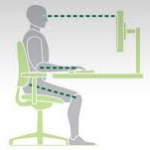Why is body mobility so important?
1. The simplest way mobility could be described would be to say: mobility is having controlled full joint excursion. When we are doing our prescribed stretches and exercises it is of the utmost importance to do them with fluidity of movement under control of movement limits and speeds.
2. The epidemiology of back pain is not a pretty figure, 80-85% of us will have back pain within our lifetimes and half of this figure will have days of work accrued over the timeline of their pain. Latest science and experience has pointed us in the direction of injury prevention/reduction. Increasing joint mobility has been at the forefront of preventative musculoskeletal medicine.
3. So when we are out at the gym or doing our prescribed physio exercises specifically for your current injury/injury reduction strategies think about keeping all your movements within your limits of control. Because at the end of the day you are the one getting real-time feedback from your exercises and stretches. If it just doesn’t feel right stop and discuss it with your physio.
4. How do I address mobility then, is it simply stretching my muscles? This question is asked very frequently because it is a confusing and confronting topic to those who work on flexibility regularly. Here are some ways to work on mobility:
-
- PILATES: Controlled flowing movements through the full joint range and is suitable for all body types, genders, and fitness and strength levels.
- Free weight squatting and lunging: helps to increase coordination, joint nutrition and resets our central nervous system after a day of sitting and being sedentary.
- Simply concentrating on the way you move in the gym and even when walking or running. Do so with grace
- Foam rolling and using a pocket physio to make sure our muscle tissue is sliding well
 Physiotherapy can help you attain greater mobility from your body.
Physiotherapy can help you attain greater mobility from your body.
Joel Watkins (APAM)
POGO Associate







